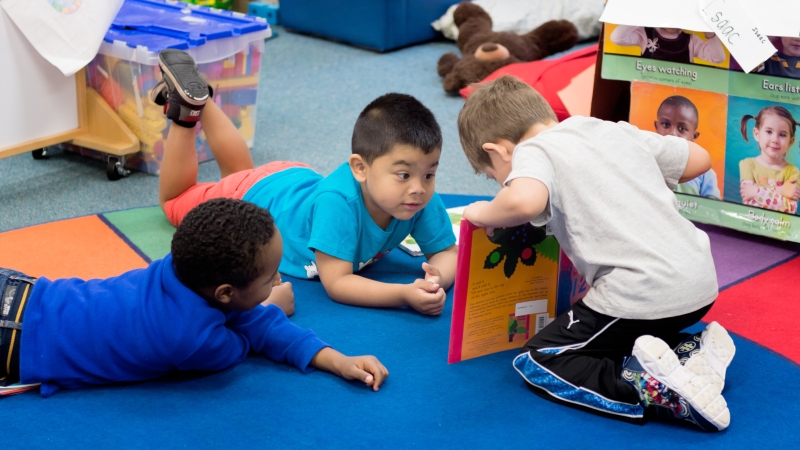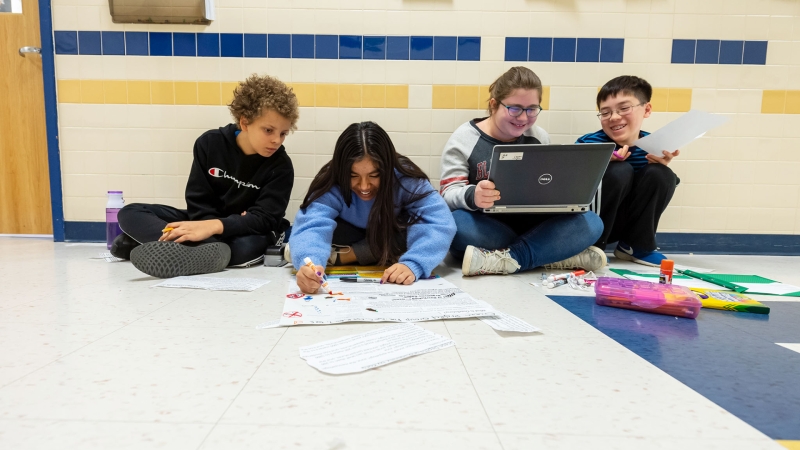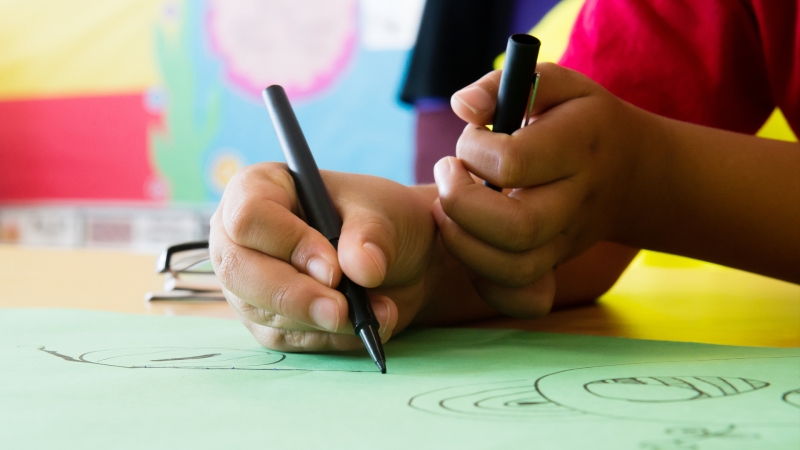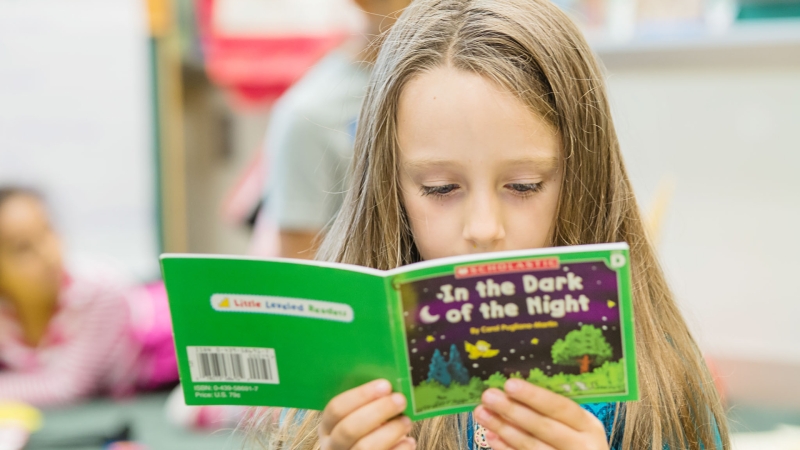
Decisions and Outcomes
“You can’t judge a book by its cover” is an age-old adage that lies at the heart of this decision-making strategy.
“You can’t judge a book by its cover” is an age old adage that lies at the heart of this decision- making strategy. Next time you browse through a book store, take a look at the creativity and color that goes into designing a book cover as publishers compete to capture the reader’s attention and sell their product. We have all selected books at one time or another based on superficial reasoning and sometimes we are lucky and it truly is a great book and other times, we are disappointed. Book selection is just one of many choices children make each school day as they practice making decisions and dealing with the outcomes.
Learning to make good decisions with a consideration for possible outcomes is something that every parent can practice with their child. For example, your child may want to purchase a toy or game. Rather than grant or deny permission, use this as an opportunity to consider the short term consequences of this decision (the purchase may use up all of her savings; he may have to forego other purchases for awhile, etc.). However, the thinking should not stop there. Children should also learn to consider long-term consequences (the item may go on sale and be less expensive if she waits, a newer improved model may come on the market, it may be impulse buying and later he may regret spending the money.) These are important considerations for children to think about that will carry on into adult life and continue to serve them well if they learn to think this way early in life.
The following strategy helps children learn that decisions have multiple outcomes that must be considered if they are to be good decision-makers.
A simple T Chart can be used to set up the decision making process. For example:
Decision: Should I play after school soccer?
|
Short Term Outcomes |
Long Term Outcomes |
|---|---|
|
Less time to play after school |
I may learn to manage my time better |
|
I may not be on a team with my best friend |
I may make new friends |
|
Soccer requires practice and hard work |
I will build up endurance and speed |
|
I will get a uniform, shin guards, and cool shoes |
I will learn new skills |
With practice, children can learn to assess and evaluate a variety of decisions and possible outcomes. This helps them understand the importance of examining multiple outcomes before embarking on a course of action. The concept of examining outcomes is relevant for all students as they learn to consider both short-term and long-term consequences in the decision making process.
Over time they may begin to see a pattern in the decision-making process and find that often the long term outcomes are the opposite of the short term. For example, a decision about whether or not to do homework may yield the short term outcome of more free time to play; however, the long term outcome might be that the child has to stay after school another day to complete missed assignments which ultimately negates the short term outcome of more time to play.
As children get older they can learn the value of research and how to use information to make decisions. Consumer guides, ratings and reviews, and questioning experts are just a few of the resources that are readily available to inform decision-making with adult guidance. For example, if a child is interested in purchasing an electronic device then learning to review and compare different makes, brands, and/or features in a consumer guide either online or offline would be a helpful strategy. Book reviews are also available online and children can take time to read what others think of a book. They can also learn to write and add their own review. Interviews with experts can also provide valuable information. If a child is deciding whether or not to play a certain instrument, she may want to interview a professional who plays that instrument to learn about the practice, training, and techniques that are part of a journey toward expertise. Whether it is a product or a service, it is always important to read and learn not only what the positive reviewers have to say but the negative aspects as well. Over time, children will learn the importance of an informed decision making process.
A focus on decisions and outcomes also has broad applications to subjects taught in school and these can be used to deepen students’ understanding of this thinking skill. History is replete with examples of leaders and nations that made decisions with serious implications for the world in which we live today e.g., the colonists made a decision to revolt against British tyranny which led to the American Revolution (Loyalists made a decision to remain loyal to the king of England and consequently many returned to England), President Abraham Lincoln issued the Emancipation Proclamation which had critical short term (freedom for thousands of slaves) and long term consequences (the Thirteenth Amendment of the Constitution of the United States which guaranteed the permanent abolition of slavery). Literature is another excellent source of examples of decisions made and the outcomes that characters in stories and novels face as a result of their decisions. In the story of the Three Little Pigs, each pig had to deal with the consequences of the decision he made on which material to use to build his home. The first pig, who made his home of straw, had more time to play in the short term; however, in the long term he lost his home completely and had to move in with his wiser brother! In fictional writing, students have an opportunity to think about the decisions that authors make as they write each story, knowing that each decision will lead to an outcome that will impact the plot and the story’s end. Mathematicians and scientists continually make decisions and review the outcomes of their decisions based on evidence that is a result of the decision making process. New discoveries in mathematics and science are based on the work of experts in the field making decisions, evaluating outcomes, and seeking to learn more in a wide variety of specialized areas. In all of these examples, the decisions made and the consequences of those decisions (both long and short term) help students gain a much deeper understanding of the importance of those decisions and their impact on the world in which we live.
Decision-making is integral to everything we do. Helping children learn and understand the thinking processes that lead to good decisions is an important skill that will serve them well now and in the future.
Related Pages

Research - The Road to Action
Teaching children how to research is a critical skill that can start early and will serve them for a lifetime. In today’s world, where there is so much information readily available at our finger tips, it is never too early to begin to teach children how to search with a “critical eye”.

Creative Problem Solvers
The significant problems we have cannot be solved at the same level of thinking with which we created them.

Creative Brainstorming with SCAMPER
Brainstorming encourages children to think of new ideas, combine existing ideas in new ways, and generate original and often unusual ideas.

The Art of Persuasion
Persuasion is used quite broadly in today’s society.

Colorful Thinking
What color is your thinking? Six Thinking Hats, a book by Edward DeBono, provides a colorful structure to guide children as they discuss a topic or issue from six different perspectives.

Analogies: Creative Connections!
A facility for working with analogies gives children a structure for generating creative ideas, seeing complex relationships, and making unusual comparisons.

Point of View
Learning the role of view point and understanding that each person has a unique point of view is one of the most important thinking skills that a child can acquire.